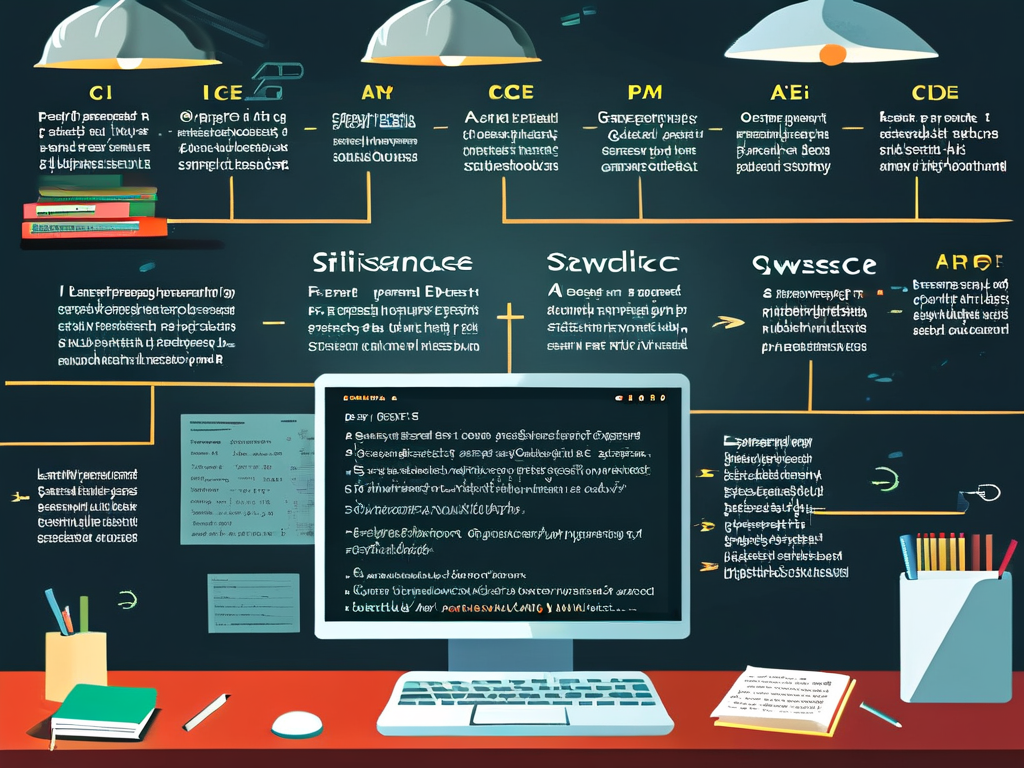Compiler principles form the backbone of software development, bridging human-readable code and machine-executable instructions. At its core, this discipline focuses on systematically transforming high-level programming languages into efficient low-level machine code while ensuring correctness and performance. Let’s delve into the key components and real-world implications of compiler design.

The Anatomy of a Compiler
A compiler operates through a multi-stage pipeline, each addressing specific challenges. The lexical analysis phase scans source code to generate tokens—basic elements like identifiers, keywords, and operators. For example, in the statement int x = 5;, a lexical analyzer identifies int as a keyword, x as an identifier, and = as an operator.
Next, syntax analysis (or parsing) organizes tokens into a hierarchical structure called an Abstract Syntax Tree (AST). This phase validates code against grammatical rules defined by a context-free grammar. A common tool for this stage is the LALR parser generator, exemplified by Yacc or Bison.
Semantic analysis ensures logical consistency by checking type compatibility, variable declarations, and scope rules. For instance, assigning a string value to an integer variable triggers an error here. Modern compilers like Clang integrate detailed error messages to aid developers in debugging.
Intermediate Representations and Optimization
Compilers often generate an intermediate representation (IR)—a platform-agnostic code format—to enable optimizations. LLVM’s IR, for example, allows transformations such as dead code elimination or loop unrolling before targeting specific hardware. Consider this simplified IR snippet:
%result = add i32 4, %value ret i32 %result
Optimization phases apply algorithms to improve performance or reduce resource usage. Constant folding, inline expansion, and register allocation are classic techniques. Java’s Just-In-Time (JIT) compiler dynamically optimizes bytecode based on runtime profiling, showcasing adaptive compilation strategies.
Target Code Generation
The final stage translates optimized IR into machine-specific instructions. This involves register allocation, instruction selection, and addressing mode decisions. For example, x86 assembly code for a = b + c might resemble:
mov eax, [b] add eax, [c] mov [a], eax
Modern compilers like GCC and Rustc leverage architecture-specific backends to handle nuances across CPUs, GPUs, and embedded systems.
Beyond Traditional Compilation
Compiler techniques now power diverse applications. Static analysis tools (e.g., ESLint, Pyright) reuse parsing and semantic-checking logic to detect code smells. Domain-Specific Languages (DSLs), such as SQL or TensorFlow’s computation graphs, rely on custom compilers for efficient execution. Even transpilers like Babel demonstrate how source-to-source translation enables cross-version or cross-language compatibility.
Challenges and Innovations
Emerging hardware architectures (quantum computers, neuromorphic chips) demand novel compilation approaches. Researchers are exploring machine learning-driven optimizations, where neural networks predict optimal code transformations. Meanwhile, WebAssembly (Wasm) compilers prioritize portability and security, enabling near-native performance in web browsers.
In education, compiler construction remains a rite of passage for computer science students. Building a toy compiler—from lexing to code generation—reveals the interplay between theory (automata, formal grammars) and practical engineering.
Compiler principles are far more than academic curiosities—they underpin every layer of computing. As software complexity grows, so does the need for sophisticated compilation strategies that balance speed, correctness, and adaptability. Whether optimizing a game engine or deploying AI models, understanding these mechanisms equips developers to harness the full potential of modern computing ecosystems.









